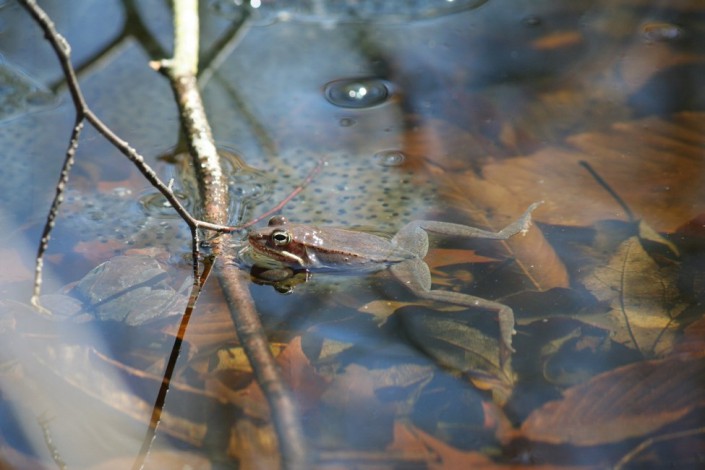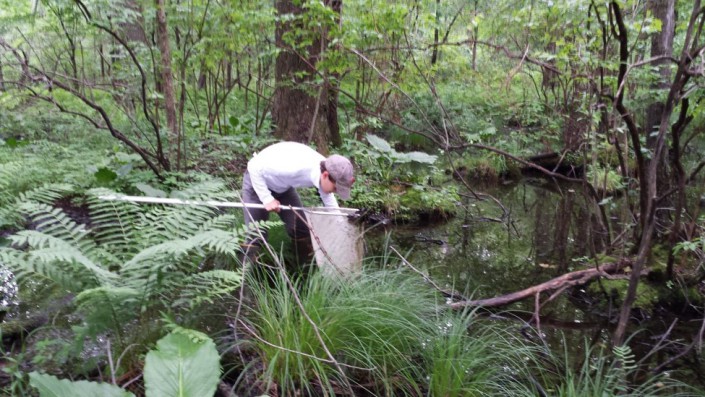Ranavirus Impacting New Jersey Amphibians
Emerging Disease Known to Affect Amphibians, Reptiles and Fish
Conserve Wildlife Foundation is excited to celebrate Amphibian Awareness Month during March 2015! Follow us on social media and be sure to check your email (sign up for our list) for weekly stories on the amphibians of the Garden State and our work to protect them.
By: Kelly Triece, Wildlife Biologist

While human diseases such as Ebola and the zombie apocalypse virus have made recent headlines in the news and on our TV screens, there is a virus that is also affecting our local amphibian population. This emerging disease known as Ranavirus, has become increasingly common in the U.S., including New Jersey.
This virus has been known to affect amphibians, reptiles and fish. It is of great concern because it can kill nearly 100% of amphibian larvae (tadpoles) within just a few days once a population is infected. Ranavirus causes skin ulcerations and organ hemorrhaging, and is especially threatening to larvae, specifically wood frogs (Lithobates sylvaticus). Transmission of the disease can be spread direct contact, waterborne exposure, contaminated soil, and ingestion of infected tissues.
While the virus has been known to cause major die-offs all over the world, little information on the timing, extent, and frequency of the disease outbreaks is known in the Mid-Atlantic U.S.. In order to gain more information, a multi-state survey has been underway since 2013. The project is led by Scott Smith of the Maryland Department of Natural Resources. Conserve Wildlife Foundation staff biologists are doing a large amount of New Jersey’s field surveillance with support from the New Jersey Division of Fish and Wildlife Endangered and Nongame Species Program (ENSP).

As part of this project, in 2013, breeding ponds throughout the New Jersey were sampled for prevalence of Ranavirus. Thirty larvae from each study pond were captured by dip net, physically examined, euthanized, and preserved for screening and other analyses at the labs of Montclair State University and/or the National Wildlife Health Center. Results determined that about half of these ponds tested positive for Ranavirus.
In 2014, Ranavirus-positive sites were re-sampled for presence of the disease. At about 25% of the sites, disease symptoms and/or dead tadpoles were found, though no mass die-offs were observed. Investigations are still ongoing to further determine the impact of Ranavirus on amphibian populations as well as potential environmental factors that may be associated with the disease.
Learn more:
Kelly Triece is a Wildlife Biologist for Conserve Wildlife Foundation of New Jersey.